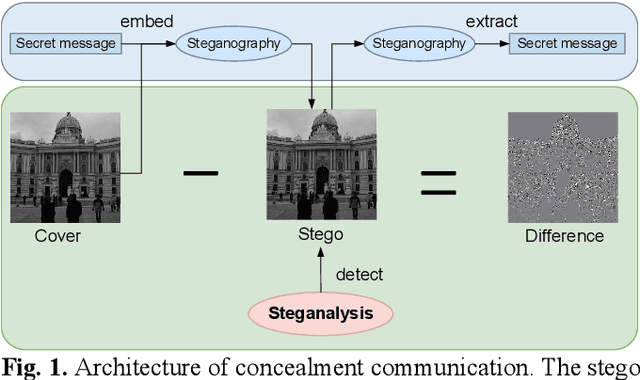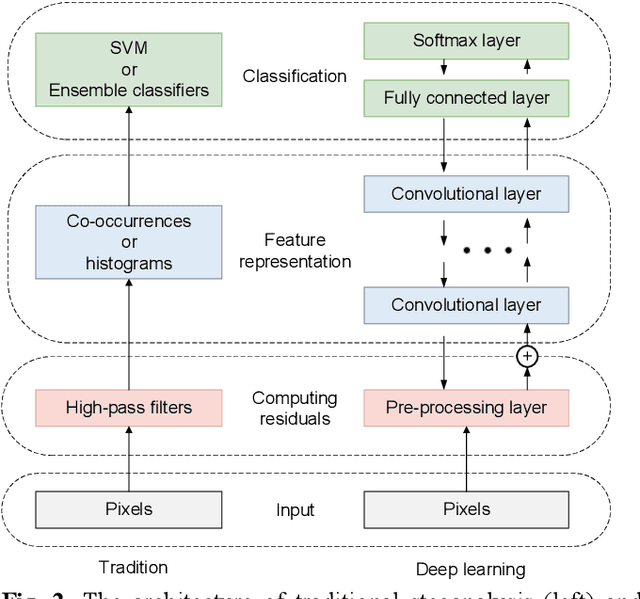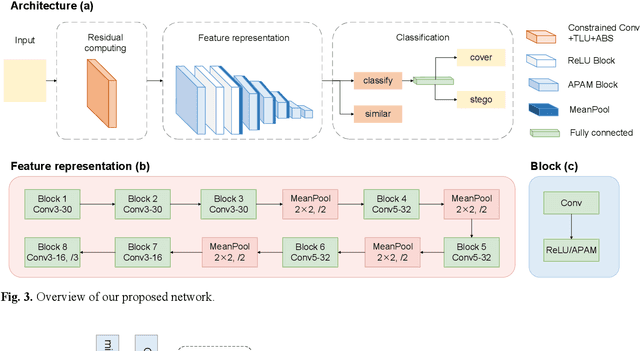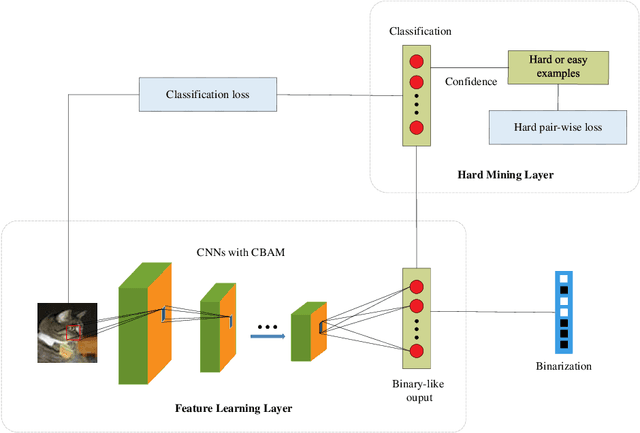Junle Liang
Steganalysis of Image with Adaptively Parametric Activation
Mar 24, 2022



Abstract:Steganalysis as a method to detect whether image contains se-cret message, is a crucial study avoiding the imperils from abus-ing steganography. The point of steganalysis is to detect the weak embedding signals which is hardly learned by convolution-al layer and easily suppressed. In this paper, to enhance embed-ding signals, we study the insufficiencies of activation function, filters and loss function from the aspects of reduce embedding signal loss and enhance embedding signal capture ability. Adap-tive Parametric Activation Module is designed to reserve nega-tive embedding signal. For embedding signal capture ability enhancement, we add constraints on the high-pass filters to im-prove residual diversity which enables the filters extracts rich embedding signals. Besides, a loss function based on contrastive learning is applied to overcome the limitations of cross-entropy loss by maximum inter-class distance. It helps the network make a distinction between embedding signals and semantic edges. We use images from BOSSbase 1.01 and make stegos by WOW and S-UNIWARD for experiments. Compared to state-of-the-art methods, our method has a competitive performance.
Hard Example Guided Hashing for Image Retrieval
Dec 27, 2021



Abstract:Compared with the traditional hashing methods, deep hashing methods generate hash codes with rich semantic information and greatly improves the performances in the image retrieval field. However, it is unsatisfied for current deep hashing methods to predict the similarity of hard examples. It exists two main factors affecting the ability of learning hard examples, which are weak key features extraction and the shortage of hard examples. In this paper, we give a novel end-to-end model to extract the key feature from hard examples and obtain hash code with the accurate semantic information. In addition, we redesign a hard pair-wise loss function to assess the hard degree and update penalty weights of examples. It effectively alleviates the shortage problem in hard examples. Experimental results on CIFAR-10 and NUS-WIDE demonstrate that our model outperformances the mainstream hashing-based image retrieval methods.
 Add to Chrome
Add to Chrome Add to Firefox
Add to Firefox Add to Edge
Add to Edge